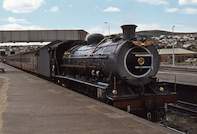Eastern District of the Cape Colony
Uitenhage is the second oldest town in the Eastern districts of the former Cape Colony. Founded in 1804 by Jacob Glen Cuyler, the town was named in honour of the Cape Commissioner-General Jacob Abraham Uitenhage de Mist. It was originally part of the Graaff Reinet district, and was known as the administrative border for the Cape Colony.

When the Cape Commissioner-General split the two districts in half, Uitenhage was named a prime location for timber farming. Its abundance of water and picturesque setting made it quite popular, and the climate was regarded as so healthy that Cape Town patients were recommended by their doctors to recuperate there.
Over the next few decades, the town grew steadily as English-looking and Georgian white houses sprung up accompanied by beautiful little gardens and a number of important buildings like the post office. The town’s first Dutch Reformed Church was built in 1843, and the Zwartkops River became the epicentre of the area’s wool-washing industry.
Uitenhage became an important educational centre; and is the home of the oldest boys' school in South Africa, namely Muir College (established in 1822 as the Uitenhage Free School).
Uitenhage became a municipality in 1877. Soon after, the construction of a railway line and station began, connecting the town to other parts of the Eastern Cape and beyond.
A proper town hall was erected in 1882, as well as a library and a new school building. A number of new religious buildings also sprang up in the 1890s, including St Katherines Anglican Church, St Joseph's Roman Catholic Church, the Congregational Church and the Wesleyan Jubilee Chapel.
By 1910 Uitenhage was a thriving town with a healthy economy built on agriculture and railway industries. Since the 20th century, it has become a beautiful holiday town, ideal for tourists wanting to relax and breathe fresh countryside air.